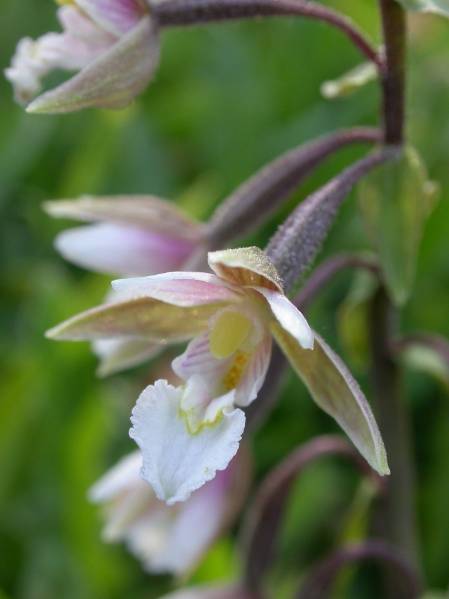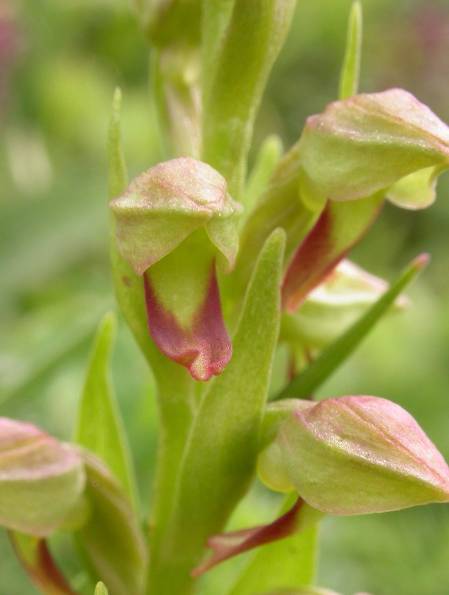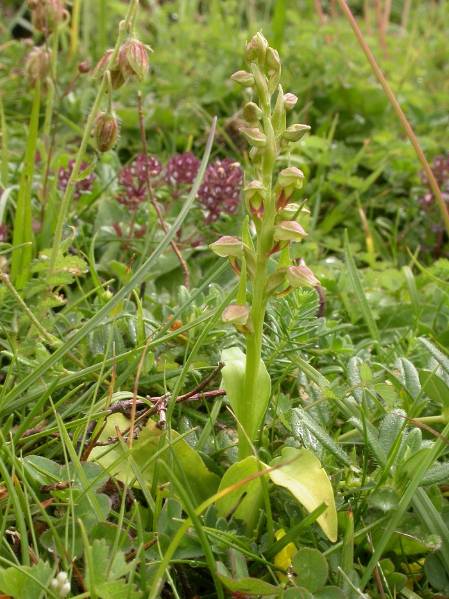This week we hear back from Kath Castillo, our Orchid Observers Project Officer, about what orchids you can search for in the field this month.
August is nearly here and with it the start of the holiday season, so if you are planning a walking holiday or a bit of wildlife photography in the UK, there are some stunning species on our list to look out for and photograph for Orchid Observers.
Flowering now and into late August, the Marsh Helleborine (Epipactis palustris) is a fairly large orchid with loose clusters of pink and white flowers with a white frilly lower petal. The species, which grows in wetland areas such as fens and damp dune slacks, can flower on a grand scale, with tens of thousands of plants creating a carpet of flowers. Although it may occur in profusion in some areas, the Marsh Helleborine is declining in England and Wales due to habitat loss.
A flower of the Marsh Helleborine. Photo credit: Fred Rumsey.
Marsh Helleborine photographed flowering in large numbers last summer at Berrow Dunes, north Somerset. Photo credit: Fred Rumsey.
If you are up in northern England and in north-east parts of Scotland and likely to be visiting and walking in woodland, particularly pine woods, then look out under the pine trees on the forest floor for small spikes of creamy white flowers which are very hairy! Take a look at the leaves; if the veins are distinctively net-shaped (rather than parallel as in most UK orchids) then you may well have found Creeping lady’s-tresses (Goodyera repens).
Please take a photograph and record the location and date and upload your data to the Orchid Observers website.
Creeping lady’s-tresses at Eden Valley, Cumbria. Photo credit: Mike Waller.
A similar looking species, but in another genus altogether, is Autumn lady’s-tresses (Spiranthes spiralis) which is found in southern England, most commonly by the coast This small orchid has tiny white flowers arranged in a single spiral around the stem resembling braided hair, hence the common name. An interesting fact is the leaves develop in autumn and photosynthesise throughout the winter but wither before flowering – this is an adaptation to hot dry climates. Germination to flowering takes 14 years. This is a Mediterranean species that only grows on calcareous grassland with very short turf. Look out for it in late August and into September on chalk downs, fixed dunes, cliff tops and even lawns and old grass tennis courts!
Autumn lady’s-tresses at Eggardon Hill in Dorset. Photo credit: Chris Raper.
The Orchid Observers team would once again like to thank all our participants who have been out photographing orchids and collecting records from all over the country; nearly 1600 records have been submitted so far!
Kath Castillo
Kath is a biologist and botanist working as the Orchid Observers project officer and along with the Zooniverse web team developed the Orchid Observers website. She now tries to get out into the field whenever she can to find and photograph wild orchids!





